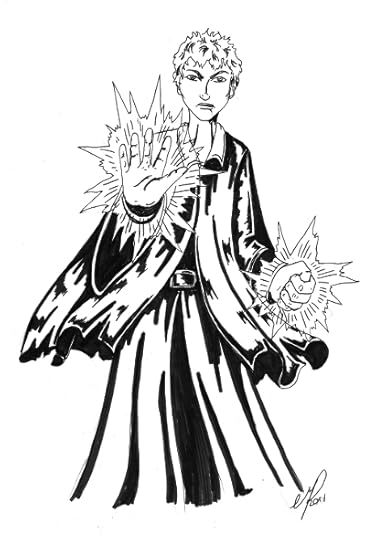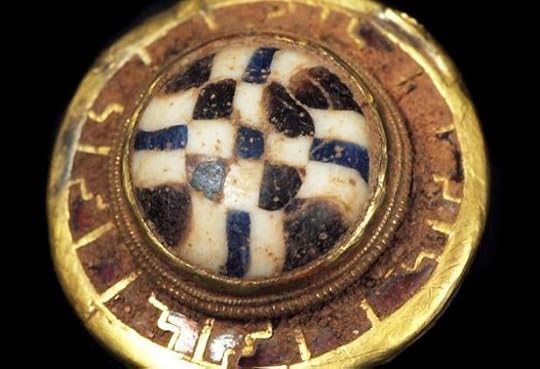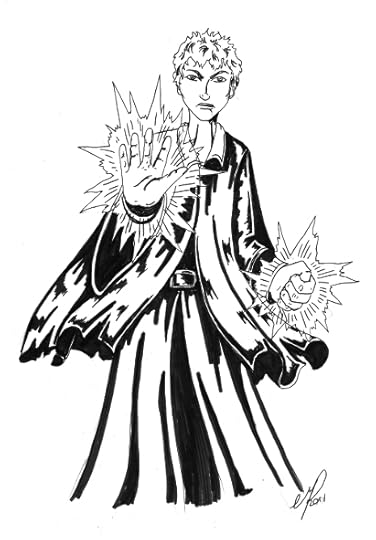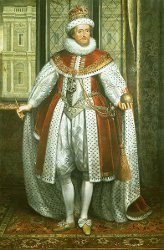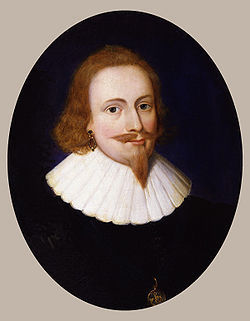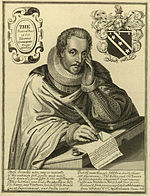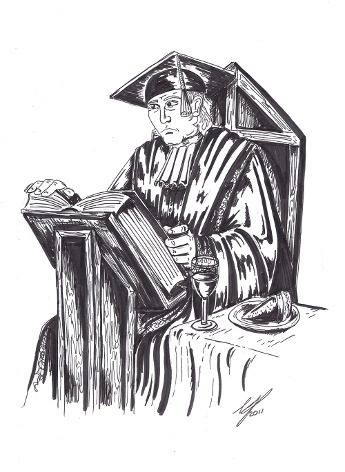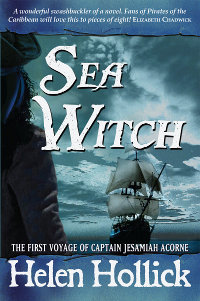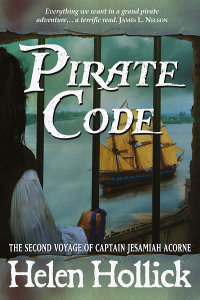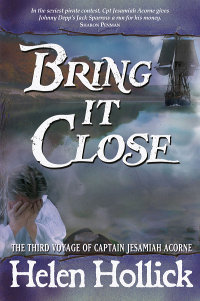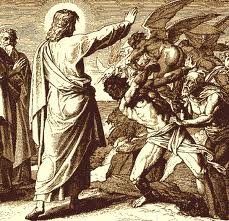Richard Denning's Blog, page 18
July 20, 2011
Benjamin – haunted by sorrow and guilt, blessed with terrible powers
Character sketch from The Last Seal. Sketch is by Gill Pearce of Hellion's Art
Benjamin, a Westminster school boy, is haunted by flashbacks to the night his parents died in a fire.
One day, whilst playing truant, he comes across the thief Freya and is forced to flee with her leading to an encounter with agents of the Liberati who are seeking a scroll he picked up in a bookshop. They are rescued by Gabriel, an agent of the Praesidum who oppose the Liberati.
Fascinated by the arcane knowledge of these societies he is tempted by the power both societies wield but comes to realise that the Liberati's goal to release an evil demon presents great danger and must be opposed and in so doing must use his abilities to the limit to succeed. Doing so forces him to confront his own past and the guilt he feels over his parent's death and he will have to make a painful choice in order to defeat his enemies.
To find out read The Last Seal.
Check out the book's Facebook page here:http://www.facebook.com/TheLastSeal
Read part of the book here: http://www.richarddenning.co.uk/thelastseal.html
July 19, 2011
A visit to the Staffordshire Hoard
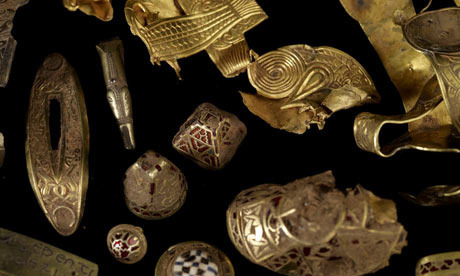
Last Tuesday I visited the Staffordshire Hoard exhibit at Stafford Guild Hall gallery. In 2009 a treasure hunter armed with a metal detector found a vast number (3500) of items of gold and silver in a field near Lichfield in Staffordshire, England. This hoard is the single largest collection of items from the Anglo Saxon period – even larger than Sutton Hoo the great burial treasure of King Redwald of East Anglia. The treasures were purchased for the nation and money provided to preserve, research and exhibit them.
This year the items went on display in Birmingham Museum and Art Gallery as well as in Stafford. Later in the summer they will be shown in Lichfield Cathedral and Tamworth Castle (Tamworth was the ancient capital of Mercia the Anglo Saxon Kingdom wherein the treasures were found). Last week I popped along to take a look.
You have to book in to see the exhibit but it is free to do so. You get a 45 minute timed slot to look around. That is adequate time as it is only a small display. What you get is first a small area describing the finding of the hoard, a bit about 7th century Mercia and speculation of the nature of the hoard. You learn that at this time Mercia stood on the front line between the Anglo Saxon lands and the Vikings who were pushing down from Northumbria or raiding along the Trent. So was the hoard the treasures of the Mercian King or a warlord? Was it Viking loot from a raid? How did it end up buried in a field? No one knows as yet. What was thought interesting is is contains no feminine items (combs, broaches etc) but mainly is either religious items or that of a military nature (bits of swords etc).
Then you can pick up and try the weight of certain replica items – two shields, a sword and a seax and three helmets.
Finally you enter the display area. There are two areas. In each there are three small glass pyramids with treasure items on 4 sides. There are maybe 3 to 6 items per side – so a total of around 100 items. Many items are small – parts of a sword, a piece of a helmet etc. There are no large items really so if you are hoping to see a huge pile of treasure you would be disappointed. It is better to see this as an opportunity to get a feel for the quality of the workmanship and also how elaborate the items could be. The main impression I got was the skill of the craftsmen. Some of the detail is incredible with fine threads of gold and silver woven or jewels are being mounted on beautiful mounts.
In the museum there is a well made video showing something of the Saxons, who they were and how they made some items. A gift shop sells postcards of the items and some replica items BUT not as many as I would have hoped.
Is it worth the visit? Yes if you are close by and are interested in the period. It is not a large display however and I hope that in time a larger display would expand on what is after all only a start – it is only 2 years since this hoard was found.
My own Dark Age Novel, The Amber Treasure is in part about the theft of two great treasures – a set of rare jewellery and a sword.
July 16, 2011
Words of Power – sorcery in 1666
Words of Power in the world of The Last Seal
The World in The Last Seal is our world: London as it was in September 1666 but with a difference.
The race of demons exist and are almost indestructible and very ancient creatures who existed on our earth centuries before mankind. Our ancestors fought a war in prehistoric times – a war fought with weapons and with sorcery – and in time banished the demons to the void outside our world.
Over the centuries some men tried to bring the demons back and to free them from their captivity – these became the Liberati. Others strives to protect our world from the demons and these were the Praesidium. Their battle raged through the centuries.
In the 14th Century Blake – a Liberati – managed to free the demon Dantalion. His triumph was short lived as Cornelius – a Praesidium – bound the demon in a tablet and buried the tablet under the city of London. Now, three hundred years later, the Liberati are poised to release Dantalion and a new battle to save the city and the world will ensue.
Words of Power
"Kipofu‒Lumen‒Glimt," Gabriel had shouted and then had explained how the words usually combined the different components needed to make the power work.
"Firstly, there is always a word that represents the type of effect desired: perhaps to fire a projected bolt of energy, maybe influencing the mind, or altering the physical world. The word focuses the mind on the end result. Secondly, comes a word that summons the force or power that will actually be used to make it happen, such as fire or light, pressure or subtle hypnotic effects. Finally, another word actually triggers the effect, in much the same way that an officer shouting the command, 'Fire' to his men will result in them shooting at the enemy. As you learn the words you have to work out what part of the syntax or the grammar they are and then you can combine them to build up different phrases with wide-ranging effects."
"Like learning a language at school I guess," Ben had mused.
"Exactly the same really, so then, go ahead and try."
Benjamin had tried and found that not only could he master it, but the power and force he used were much more than Gabriel had produced. The older man had nodded appreciatively, but then looked anxious. Ben had tried to appear modest, but inside he had felt the raw power build up and channel through him. It was intoxicating. It took away the pain of his parents' death and replaced it with a giddy, exhilarating sensation. He had to learn more; he must know more.
In The Last Seal Gabriel, Artemas and Ben use Words of Power as weapons with which to fight, a means of defence and a method of summoning a demon. These were once words that the demons spoke in their infernal language and which held power. These same words found their way into our many languages, buried away in a thousand dialects, but both the Liberati and the Praesidium have discovered and combined the words and now they can use these words in their conflict. Here are some of these words, which I used in this book. I have included here the words used and shown the languages they come from as well as a pronunciation guide.
Flash bang: "Kipofu-Lumen-Glimt"
Blind (Swahili Kipofu); Light (Latin Lumen) ; Flash (Norweigian Glimt)
Bolt of Lightning: "Calamus Aστραπή Cтрелять"
Arrow (Latin calamus); Lightning (Greek astrapi); Shoot (Russian strelyat)
Rite of freeing Dantalion: "Eleuthero Libertas Dantalion"
Separate (Eleuthero Greek) Freedom (Liberats Latin) Dantalion (name of the demon)
Cone of Ice: "κώνος , jää , décharge!"
Cone (Greek Konus ) Ice (Finish Yar); discharge (French daysharge)
Dismissing Illusion: "Ostendu, Realität, núhwílum!"
Reveal (Latin ostendu) ; Reality (German realitate) ; Now (Old English newveelum)
Mystical Shield:"Contego,Aeris, Minä!"
Shield (Latin contego), Air (Latin airis), Myself (Finish mineh)
Open doorway to Abyss "Ingang, Vácuo Nepokriven"
Entance (German ingank); Vacuum (Portuguese vaqwo) Open (Serbian nepocriven)
Check out the book's Facebook page here:http://www.facebook.com/TheLastSeal
Read part of the book here: http://www.richarddenning.co.uk/thelastseal.html
July 15, 2011
A decade a week:1610 to 1619
King James I
This decade saw the country slipping more and more into a financial mess. This was due to incompetence and self serving amongst James' advisers. Tensions between pro catholic and pro protestant parties began to grow as well as the feeling that the King was under too much influence of a group of Catholic nobles.
Falling out with Parliament
With the finances of the nation getting worse, James summoned Parliament in 1610 and asked it to grant him money. In this period a monarch rules the country and decided on foriegn policy BUT only had finte finacial resources. If the nations finances were pour or of they needed to go to war a King or Queen would summon Parlaiment who could then pass legislation to raise taxed.
In an attempt to persuade them to do this Salisbury (Cecil) tried to negotiate finance in exchange for some concessions from the crown. Negotiations did not go well and in the end James dissolved parliament. In 1614 there was another attempt to persuade parliament to grant him money but again this was unsuccessful. Dismissing it after a mere 8 weeks, James governed without parliament until 1621 by selling Earldoms and other gifts in exchange for finance from nobles and businessmen.
Some successes in World Trade
One area where James had success was in foreign trade. The East India Company was already in existence but James sent trade delegations to Japan and in 1613 managed to establish rights to trade directly with Japan.
James and Religion
After the Gunpowder plot James cracked down on religious dissent. This policy was applied both to Catholics and non conformist protestants. Individuals who refused to swear an oath of allegiance implying the pope had no authority were liable to prosecution. Those who took the oath however were tolerated particularly as the years went by and when the Howard party gained influence. In Scotland James tried to enforce the English system of Bishops on the Scots. Although in 1618 the Bishops forced through his Five Articles of Perth the changes were widely opposed and in this issue lay the seed for dispute between King and the church in Scotland that would come back to bite James' son Charles in the future.
The one high point of James' reign as regards religion was the attempt to sort out various errors and conflicts amounting from previous translations of the bible. These steps led to the publication of the King James Bible in 1611 which is still in widespread use today and considered a masterpiece.
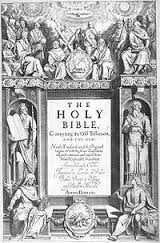
Rumours about his sexuality
James was married and had many children. Yet rumours abounded of homosexuality. Part of this was because he showed little inclination to military pursuits – followed a policy of peace with Spain and enjoyed academic pursuits. This is shown in the witty phrase that did the rounds: Rex fuit Elizabeth, nunc est regina Jacobus(Elizabeth was King, now James is Queen) There is however some evidence of very close relations between James and Carr, and James and Villers. There was even a secret passage linking the later two bed chambers.
The Rise of Robert Carr
Robert Carr was a handsome and charming young nobleman when he came to London in 1601 accompanied by his close friend Overy. Carr was injured in a joust and caught the eye of the king in 1606 and soon was drawn into the royal court. (Possibly this injury might have been staged to draw the King's attention) Very soon he was a close friend and advisor to James. There are even rumours (see above) that James and he were lovers.
Death of Lord Salisbury
Until 1612 Robert Cecil – Lord Salisbury – administered the king's court fairly efficiently. The problems began when Cecil died. James attempted to rule on his own but proved incapable of this. This left a power vacuum into which stepped the Howard Party and Robert Carr.
The Howard Party consisted of a group of generally catholic nobles who advocated alliance with spain and a marriage of Prince Charles to the Spanish Infanta. They drew Robert Carr into their circle when Carr began an affair with Franes Howard – wife of the Earl of Essex. Such was the influence that Carr had over James that the king arranged a divorce for Frances so that Carr and she could marry.
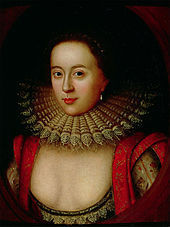
Robert Carr was soon appointed James' chief advisor – a role he was unfit for. Thus he relied upon his friend Overy to help with the administration. That was fine until Carr's affair with Frances came to Overy's attention.
The Carr/ Overy Scandal
Thomas Overy was a talented administrator who became close friends with Robert Carr and may have been instrumental in his rise to power. Although Carr held the reigns of power it was Overy who Carr relied on to help him with administration.
The Friendship came under immense strain when Overy found out about Carr's affair with Frances Howard. Overy was opposed to this and even wrote a poem called The Wife in which he spoke of the virtues expected in a wife. This put him into direct conflict with Frances who manipulated matters so it appeared Overy had insulted the Queen. Overy was placed in the tower. In 1613 he died in mysterious circumstances and Carr and Howard remained in favour with the king.
In 1615 a Tower guard admitted that he has been taking poisoned food into Overy on the orders of Carr and Howard. Both were arrested and found guilty and kept in the Tower until 1622. For Carr the fall from power was complete.
Lord Villers
The Carr/Overy scandal had tarnished the reputation of the court and James turned to another close friend: Lord Villers. Villers had been a friend of James since the kings coronation and again there are rumours of a sexual relationship here. Villers became the figure behind which opposition to the Howard party and Carr focused and on the downfall of Carr, Villers managed to become the main advisor to King James. Villers started to extend his influnce over the young prince Charles as we enter the last few years of James' reign.
The Thirty Years War 1618 to 1648
Towards the end of this decade a war began in central Europe which would involve most of the continent in some form or other over three decades. Its causes were complex and many nation's involvement were due to other factors than the root cause. Nevertheless there was a simplex origin to the conflict in the beginning.
The Holy Roman Emperor Matthias was coming to end of his life (he died in 1619). Matthias had nominated the catholic Ferdinand (Later Ferdinand II) as his heir. This was opposed by the majority of the protestant Calvinist and Lutherans in Bohemia and Austria. These rose up in rebellion against Ferdinand. The Ottoman Empire – and enemy of the Catholic Hapsburgs of which Ferdinand was a member joined the war. The fighting raged back and forth but in 1619 Ferdinand was briefly deposed as Emperor in favour of the Protestant Frederick V of the Palatinate.
This war would have an effect felt in England. The Howard party and later Villers and James had been pursuing policies of friendship towards Catholic Spain BUT sentiment at home was anti-catholic and this war fuelled that feeling. Furhermore Frederick was James' son in Law and thus he felt an obligation to try and do something to help. This would have a significant effect on the policies of James and Charles in the coming decade.
Issues that will run and run
In this decade we see James struggling with issues that would be a recurring theme in the coming quarter of a century and beyond:
The conflict between the will of the monarch and of parliament.
The conflict between a Protestant majority in the country and some catholic nobles who are seen to have too great an influence over the King
Religious tensions between the established church and those who did not want rule by bishops both in England and Scotland.
Financial difficulties
Coming Next week: the Spanish Match
Coming next week: 1620 to 1629
This article is one of a series connected with the release in August of the new paperback of The Last Seal my historical fantasy set during the Great Fire of 1666.

July 14, 2011
Publishing on Kindle? How to get images in the book
Getting Images into Kindle Books
by Richard Denning
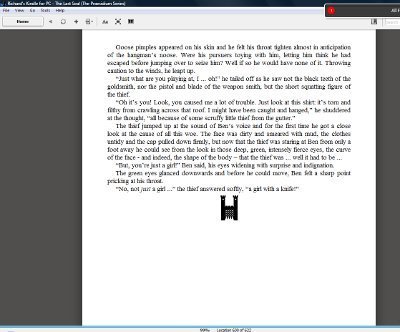
Portcullis symbol marks end of a chapter
So you have written your masterpiece and want to publish it to Kindle. Maybe you have done what I suggested and first got the manuscript prepared for Smashwords and uploaded it and it was approved so you are happy it all works and looks good.
Smashwords will take your whole document and convert to mobi, edpub etc and include all the images.
That is fine BUT now you want to publish to Kindle and get the book on Amazon. You wont want to just use the Smashwords mobi file as for starters it will have a Smashwords copyright page. It is best to start from the Word doc you got ready for Smashwords and that you know is formatted well.
How to publish on Kindle is covered here BUT in that piece I did not say how to get images into the book.
Reduce File size
When you format the document for smash-words if you follow the style guide it will tell you how to compress your images in Word. This reduces the size of the final e-book file – which is best for fast loading etc.
The DTP issue
With Kindle DTP you need really to upload a HTML file. The best way to do this is to open Word and click file…save as.. webpage … web filtered

Save as Web page filtered
Doing this removes a lot of rubbish WORD code from your book. If you don't do this you end up with a document for instance with spaces between each line.
BUT when you save as a web page – as a HTML file – the images are stripped out and put in a folder which is referred to by the main HTML file. If you just upload THAT HTML file without the images folder you will find the images dont show up and all you get is little warning icons !!!
The Solution
The answer is to zip up the HTML file and the images and upload that to Kindle DTP.
Create a folder on your computer. Call it anything you like e.g. myebook.
Open the word doc of you book (the one you have formatted for Smashwords and then edited ready for Kindle.)
Save it as a web page filtered and save it INTO that empty folder you created in 1.
Open the folder and you will find a HTML file called booktitle.html AND a subfolder called booktitle files.
Take look in that book title folder and you will see all the images from your book probably called image01.jpg etc
What you do is now come out of everything then find that myebook folder. RIGHT CLICK on it and you will get a list of options.
One of the options is send to. If you select that you will get further options one of which is send to compressed (zipped folder). Select this.
You should now see a file called booktitle.zip in the same location the myebook folder was in.
Its THAT zip file that you now upload to Kindle.
When you have set up your book in Kindle DTP and you get to the bit asking for the book file use THAT zip file.
To check all is ok open up the preview and you should see images in it. Go ahead and public the e-book
When the book is setup download the kindle book and check it out.
That's it.

RT click the Myebooks folder and choose send to Compressed (zipped) folder
Assuming all goes well you should get a nice greyscale image on your kindle:
I recently followed this procedure to upload my new Kindle version of The Last Seal – my historical fantasy set in the Great Fire of London 1666.
Do me a favour and check out the FREE sample on Kindle.
http://www.amazon.co.uk/dp/B005CC4RSC
http://www.amazon.com/dp/B005CC4RSC
July 13, 2011
Scholar of the arcane arts who leads the fight against the Fire Demon Dantalion
Character sketch from The Last Seal. Sketch is by Gill Pearce of Hellion's Art
Summary: Remaining member of the Praesidum who must overcome his fears to lead Ben, Freya and Tobias in the battle against Artemas and Dantalion.
More Info: Gabriel is a member of the Praesidum who hides in the guise of a overweight bookseller. He was an acolyte learning about the seals and also about sorcery and the spells to defend against demons and to protect men. When the Liberati and the Praesidium met in battle a year ago he panicked and the other Praesidum were all killed including the father of Tobias. He agonises over this and feels guilty about it. Nevertheless he has been trying to get Tobias to help him restore the Praesidum. Becomes a mentor to Ben and leads him and the others in the fight against Artemas and Dantalion. But will his courage fail him when the final battle arrives?
To find out read The Last Seal.
Check out the book's Facebook page here:http://www.facebook.com/TheLastSeal
Read part of the book here: http://www.richarddenning.co.uk/thelastseal.html
July 12, 2011
Book Reviews of Sea Witch and Pirate Code by Helen Hollick
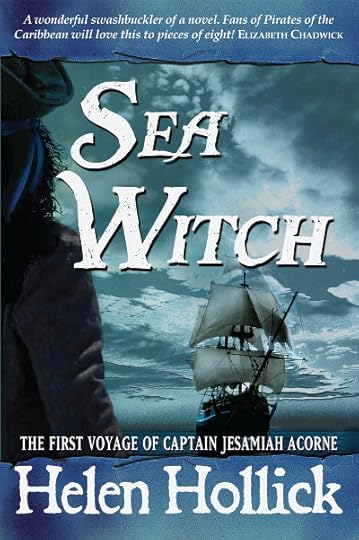
This is the first of Helen Hollick's books I have read and on the strength of it I bought book two as well as her Arthurian series. This is a fun blend of authentic historical action adventure in the pirate era – you can almost hear the rigging creak and the wind blow – with a light touch of fantasy and sorcery.
The story is that of a rogue pirate Jesamiah and the young girl destined to be his lover, the white witch, Tiola.
Jesamiah is a engaging hero and Tiola, an at times fierce heroine. The story winds back and forth between them keeping the reader interested in both main protagonists.
Hollick is not afraid to use graphic descriptions both of the fighting scenes and the sexual encounters and manages to portray a grimey, often desperate world with believable heroes and villains. You can tell that more books were planned right from the start as there are major characters introduced who seemed designed to be recurring figures. A sense that more is yet to come is also apparent in the fantastical parts – in particular the interaction between Tiola and Tethys a goddess of the sea.
The descriptions are rich and detailed, the dialogue authentic and laced with many 17th century expressions and curses and as such may not suit some readers not used to archaic terms. But anyone reading a historical novel is generally after the detail – the feeling that you are living the moments with the characters and you certainly get that here and Hollick does not drown you in detail: it is more a case of being nicely immersed. As Hollick does use magic some readers who like their history unsullied by fantasy might be put off but she blends the mix so well that it does not jar and at times you forget there is fantasy involved at all. It just feels natural to me.
Well recommended.
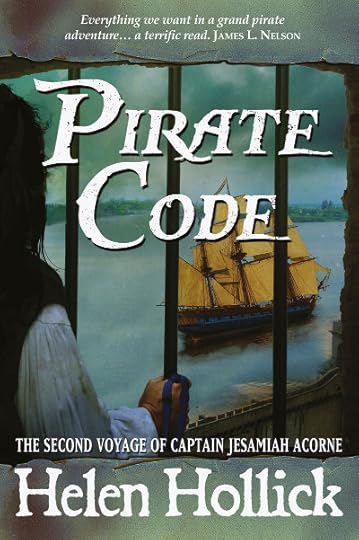
We first met Jesamiah Acorne in the superb first novel in this series – Sea Witch (Sea Witch Series). IN this sequel we return to the story of the pirate and the witch.
Jesamiah just wants to marry Tiola and live out his years on his beloved ship but fate has other things in store. To begin with Tiola's husband will only divorce her if Jesamiah goes to Hispianola and finds some barrels of precious Indigo. War with Spain looms and it turns out that the Governor of Nassau wants Jesamaiah to go to Hispaniola anyway to find a missing spy.
Jesamiah is thrust into the middle of not just a war between Spain and England but also both the mission to discover who is a spy (who can be trusted and who not) and a rebellion against the governor of Hispaniola.
Jesamiah needs all his luck and guile as well as courage to get out all this alive. Along the way we find out a little more about his past. The end is dramatic, exciting and just very well written.
For me this is better than the first book and I recommend it for anyone who loves a good pirate romp.
Why would you not like it? Well if you don't like Historical Fiction or don't like elements of fantasy in your fiction then this might not be for you but the level of authenticity in recreation of period which reflects the depth of historical research by the author is so impressive I would urge you to give it a go.
I gave both books 5 stars.

Blending History, Fantasy and a bit of Piracy
Quite a lot of the writing I do mixes real history with fantasy as I enjoy that type of treatment of both genres. My novel The Last Seal is set in 1666 during the Great Fire of London but involves sorcery, secret societies and the odd demon.
I am delighted therefore to be hosting Helen Hollick today during the Blog Tour she is doing for her Sea Witch novels. I have read the first two and have the third packed ready for my holiday reading. You can read my review of Helen's books a little later today on this blog so do come back.
I wanted to find out how Helen had set about writing a novel which mixed the age of piracy with fantasy. So then over to Helen. Hi there and welcome to Richard's Ramblings, Helen.
Hello Richard, and Blog Readers, thank you for inviting me here. I am enjoying an Internet Tour with my Sea Witch Voyages – nautical historical adventure fantasy, starring Captain Jesamiah Acorne.
A few years ago, my agent (now my ex agent) wanted me to write something like Harry Potter. I wasn't too keen. For one thing, it had already been done, and another, I write for adults. I suggested pirates instead; the first Pirates of the Caribbean Movie had only been out a few months and Johnny Depp's Jack Sparrow was causing a distinct stir among a variety of age groups, especially those of us of (ahem) a mature age. I enjoyed the movie and wanted to read something with the same feel about it – as did, I discovered from the many pirate and Jack Sparrow forums and websites, a multitude of other readers – mostly female.
Sea Witch was the result. Unfortunately my agent didn't share my enthusiasm for an adult market; she insisted I had to write it for teenage boys. I clearly saw in my mind the sort of story I wanted to write, and the audience it was aimed at. Adult fiction has more detail and I wanted some scenes to be of an adult nature. Sex and violence, I think, has no place in children's fiction. I wanted to write Frenchman's Creek, not Treasure Island. So my agent and I parted company and I wrote the book I wanted to read.
My dilemma was how much fantasy, and in what form, to bring into it. I am well known for my serious historical fiction novels – The Pendragon's Banner Trilogy and my Saxon Novels - A Hollow Crown and Harold the King (entitled Forever Queen and I am the Chosen King in the US)
The Sea Witch Voyages, however, were meant to be a bit of escapism from reality. I think of them as a blend of Sharpe, James Bond, Hornblower and Indiana Jones. The main plots of the books are based on historical fact, episodes that happened in history, like the sinking of an entire Spanish Treasure Fleet and the demise of Edward Teach – Blackbeard. Glimpses of history where I can easily locate my characters – and have Jesamiah there, right in the middle of what happened.
I wanted that touch of fantasy as well though, so Jesamiah's girlfriend (later in the series, his wife) Tiola Oldstagh (pronounced Teo-la Oldstaff) is a healer, midwife and a white witch. Not the wand-waving Harry Potter type, but the subtle use of Energy, as in the Force in Star Wars. Her name is an anagram of "all that is good".
At first, on my own without an agent, I was not sure whether to have this element of fantasy – should I write as straight historical? But there are plenty of nautical books like this – Patrick O'Brian's Jack Aubrey series, Alexander Kent, Julian Stockwin, C.S. Forrester, James L. Nelson…. I wanted to capture the essence of the first Pirates of the Caribbean Movie, the Curse of the Black Pearl. It was the unreality that appealed – the typical take with a large dose of salt sailor's yarn tale. Magic and Mermaids. I haven't used mermaids yet – but I have used the ethereal entity of the sea – Tethys the Goddess of the sea, and her daughter Rain. While in Voyage Three, Bring It Close Jesamiah is haunted by the ghost of his father. So I suppose you could say these novels are supernatural-based rather than fantasy. Ripples In the Sand, Voyage Four, which is half written, will be a sort of Time Slip novel, while the historical fact will centre on the Jacobean rebellion of 1719, when James III had planned on invading England with an Armada. Ideal for Jesamiah to become involved in – after all, trouble follows him like a ship's wake.
But how much is fantasy "fantasy" and how much of it is "real" or at least perceived "real"? How many of us believe in ghosts, or that feeling of déjà vu? And every sailor I know will swear that a ship has a living soul.
Just where does the normal blend, almost seamlessly, into the paranormal?
The entire plot of Sea Witch came into my head one afternoon when I was walking on a rainy English beach on the Dorset coast. I had researched the reality of pirates because I was interested in the subject, and then I had that not very encouraging interview with my ex-agent. Despite her negativity, as soon as I had decided to write Sea Witch (yes the title came into my mind straight away) I knew exactly what I was going to write. I even saw Jesamiah on the beach. Was he real, was he a figment of my imagination? But as writers or the teller of tales, what is real anyway? We make the believable from the unbelievable – we create what appears real from the imaginary.
I was driving, thinking about a next chapter and for a split second I saw and felt myself at the helm of a ship. My hands were curled round the spokes, I could see the mast rising ahead if me, hear the wind in the rigging, the crack of the sails; feel the spindrift on my face. I pulled over, shaking. What was that? Imagination? Time slip? Some sort of recalled DNA memory? Maybe. My ancestors came from Bristol – one of the largest Sea Ports in England.
Another time, I saw Jesamiah on the deck sorting through a chest of colours (flags) and I often hear his voice. Usually it's an amused chuckle, occasionally a few words. More often that not: "Where's the rum"?" !
So can you see now, why I was so determined to write these books how I "felt" they should be written? Is it up to an agent, publisher or editor to insist that a writer writes to order? I would have had no pleasure in writing Sea Witch for children. I have had enormous fun writing these stories for us grown ups who haven't quite grown up yet though!
Only time, and sales, will prove my decision right or wrong.
Or that I'm nothing more than a demented scribbler!
You are welcome to visit my website www.helenhollick.net
join me on Facebook -
www.facebook.com/helen.hollick
Many thanks Helen. I enjoyed your visit.
Do come back everyone for my review of Helen's books this afternoon.

July 10, 2011
The Nature of Demons in The Last Seal
The nature of demons
All races have stories of powerful and terrifying creatures which are said to be immortal and almost invincible. These 'demons' in some form or other pervade our folklore, enter our legends and also find their place in our religions. To the Christian church they are fallen angels; once servants of the almighty who fought a war against him but finally lost and were then banished to the underworld where they remain as supernatural, malevolent spirits plotting the downfall of man and the destruction of heaven.
Hindu myths also speak of 'Asuras' or demons who are evil spirits forever battling against the divinities. In Islamic legends we read of the Jinn, creatures made of fire just as we men are made of clay. Some Jinn are not evil and many are benevolent but like the fallen angels of Christianity others rejected Allah and like them were banished to dark places from which they can tempt, torment and mislead humanity.
The Babylonians, Persians, Chinese and many others have such fables about demons, deva, daimons or some other name for this type of creature. Is this coincidence or is there perhaps something behind it all? Is there some memory in our oldest traditions of terrifying encounters with creatures beyond our comprehension and certainly beyond our powers?
But if this is true, if these creatures did exist how were we able to overcome them? How could mere mortal men even hope to oppose them much less defeat them. Such things are forgotten now as the ages pass, and perhaps this is for the best: for there was indeed a time when these immortal demons walked the same earth our ancestors inhabited. They wielded immense powers and could have been seen to be gods. Indeed many men certainly treated them as gods and through their service gained power and dominion over others.
But they were not gods as others of our ancestors knew. They set themselves to the task of trying to fight against the demons futile though it might seem with merely flint and spear, fire and rock but try they did and the first great warriors of our race were born. Some though reasoned that only through power could power be defeated and became dedicated to learning all that could be learned of arcane knowledge and sorcery and so in time the first wizards and warlocks came to be.
The wars were ferocious and brutal but through the strength of our arms, the powers of our minds and the resilience of our spirits we defeated the Great Enemy, banishing them to the void beyond the world and were at last free to rule ourselves. The demons though were not content to live an immortal existence in that dark wilderness and through the endless millennia have endeavoured to find a way back. And through these endless millennia there have been those who have strived to help them and gain for themselves – just like their ancestor's before them – their share of power and glory.
Excerpt from the Journal of Cornelius Silver
The fourth day of April in the IVth Year of King Richard II
Cornelius Silver imprisoned the Demon Dantalion at the start of The Last Seal. Read how here:
http://www.richarddenning.co.uk/thelastseal.html
Check out the book's Facebook page here:http://www.facebook.com/TheLastSeal
July 8, 2011
A decade a week:1600 to 1609
The end of the Elizabethan Age and the beginnings of the Stuart Dynasty
by Richard Denning
In 1600 Elizabeth, the last Tudor monarch, had been Queen for 42 years. Many in the kingdom had known no other monarch. At the height of her power during the triumph over the Spanish Armada in 1588, she had created an image of an almost immortal majesty. Yet in the latter years her influence and hold on power were weakening.
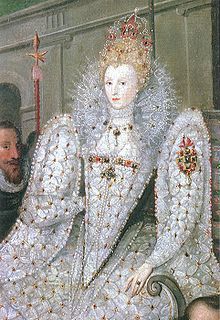
This was a period of unrest. Wars with Spain and conflict in Ireland rumbled on at great cost. This put a strain on the economy that was not helped by poor harvests. At the same time Elizabeth had become more hard line in her approach to religious non conformists – in particular Catholics. The 1590s had been an era of priest holes and raids in the night. Needing money to pursue her policies and not wanting to take it from a parliament who might impose restrictions on her she instead employed a system of patronage whereby she gained money from supporters in exchange for positions of power and influence and the granting of monopolies which made some men rich at the expense of many others and was a deeply unpopular policy.
She maintained an illusion of peace and tranquillity with a combination of propaganda and the suppressing of dissent by the use of a network of informers. Nevertheless support from parliament and the people was waning.
In these last years her senior advisor Robert Cecil began making plans for the succession. Elizabeth was not willing to discuss her choice of heir so Cecil had to move carefully. He approached James VI of Scotland who was descended from Elizabeth's grandfather, Henry VI via Margaret his daughter. He encouraged James to flatter Elizabeth and charm seemed to work because Elizabeth although not as such naming James as heir pretty much implied it.
In March 1603 Elizabeth's health deteriorated probably at least in part due to the death of close friends. She died on 24th and James was named King the same day.
James I
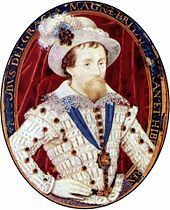
England reacted enthusiastically to the new King and James' procession south which took a month and involved lavish entertainment by many nobles was accompanied by huge crowds. Even larger crowds welcomed him in London and in July he was crowed James I of England.
One early success of his reign was managing to bring to an end the eternal wars with Spain. In other areas he was not so successful. He yearned to unite England and Scotland as one Kingdom and styled himself King of Britain but Parliament would never grant him this title.
It was not only Parliament who were unhappy with James. There had been a hope that he would relax the restrictions on the Catholics but he failed to really deliver on this and as a result these first few years of his reign involved several plots by unhappy catholics.
Main Plot
This began as early as July 1603. Spain offered to send funds via Lord Cobham to help with raising a regiment of troops which would replace James with his catholic cousin Arabella. This plot did not seem to have got very far but was discovered when the conspirators of the Bye plot were questioned. Sir Walter Rayleigh was implicated in the Main plot and imprisoned in the Tower and finally executed in 1618.
Bye Plot
In this plot a Catholic priest William Watson tried to kidnap James and force him to repeal the anti-catholic measures that were in power. Other Catholics betrayed the main conspiritors so as to avoid widespread retribution against them.
The Gunpowder Plot
The most famous of these plots to overthrow the protestant James was of course the Gunpowder Plot of 1605. 13 conspirators lead by Catesby and including Guy Fawkes (who had the charge of the gunpowder). Gunpowder was smuggled into a cellar beneath the House of Lords and it was planned that during the opening of Parliament on November 5th it would been blow up. This would kill all of the house of Lords, Commons and the King. In the chaos that ensued Princes Elizabeth (James' daughter) would be crowned as a catholic head of state.
The plot was revealed when one of the plotters sent a message to Baron Monteagle warning him to stay away from Parliament. The buildings were searched and Fawkes found.
[image error]
After the plots
James' popularity rose again after these plots and his advisers used this to squeeze concessions and money out of parliament but soon again the King and his Parliament were at loggerheads. Falling out with parliament would be a regular feature of his reign and we now see the beginning of the conflicts between the sovereignty of King and Parliament that would one day lead to civil war.
Other events:
1600: Shakespeare's A Midsummers night's dream was first performed
1602: Bodlein Library in Oxford opened
1606 The first Union Flag designed
1607 God Save the Queen first sung
1607 Jamestown founded in Virginia
1609 First Newspaper printed in Germany
Coming next week: 1610 to 1619
This article is one of a series connected with the release in August of the new paperback of The Last Seal my historical fantasy set during the Great Fire of 1666.

